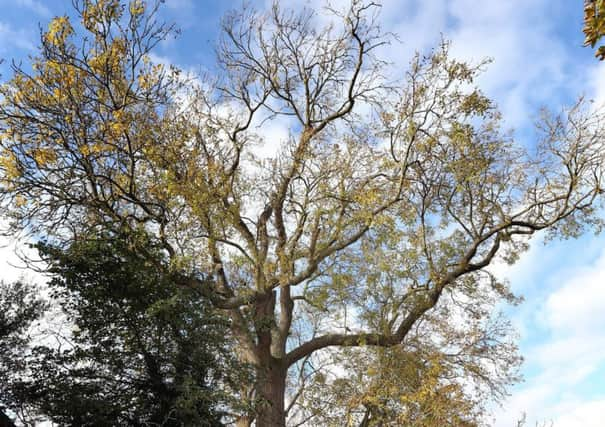Council checks for signs of tree killer fungus


East Riding Council surveyed more than 6,000 trees which it owns on highways throughout the region to see whether any were suffering from ash dieback, after three cases were confirmed in the area in autumn 2012.
In Yorkshire there have been 21 confirmed cases, with all apart from one associated with recently planted imports.
Advertisement
Hide AdAdvertisement
Hide AdExperts fear that little can be done to stop the spread of a disease, which is already killing 60 per cent of the trees in Europe.
The latest figures reveal there are now 634 cases, most in East Anglia and the South-East, with over half the cases linked to imports.
In parts of East Yorkshire and Lincolnshire, where there is little woodland and ash dominates hedgerows, there are concerns it will have a major impact.
A spokesman for the Woodland Trust said it was important people washed their boots between visits to woodlands so that fungal spores are not transferred from one area to another.
Advertisement
Hide AdAdvertisement
Hide AdHe said the wind-borne disease seemed to be spreading “exponentially” across the country.
He said: “Once we get to the spring and summer and start seeing the trees in full leaf we will get a better idea of how it is spreading.
“Particularly in East Yorkshire or Lincolnshire, it is ash-dominated. If a disease like ash dieback hits it will wipe out potentially huge numbers of ash trees and there is nothing that will take its place in the short term.”
Andy Harper, from East Riding Council, said they would be looking for signs of the disease when they start their survey in April. He said: “If we find anything it will have to be reported and dealt with. At the moment it’s just a question of felling trees to stop the spread.”
Advertisement
Hide AdAdvertisement
Hide AdIn December, Derbyshire became the 16th county to confirm a case of ash dieback, which is caused by the fungus Chalara fraxinea, in an established woodland.
The disease results in lesions, wilting and crown dieback. Difficult to spot during the winter, trees with the disease will become more obvious as they come into full leaf later in the Spring.
The Government was criticised by the National Trust last year for doing too little too late to try and stop the spread of the disease. Last week a House of Commons select committee said cuts to the Department for the Environment Food and Rural Affairs – it has to save £300m by 2016 –would hamper its future ability to cope with emergencies like flooding and ash dieback.
A study by the Government’s adviser on nature conservation, the Joint Nature Conservation Committee, said some species that rely on ash trees could see declines or even face extinction, as a result of the disease. In total, 1,058 species are associated with ash, with lichens the group most likely to be impacted by the disease.
Advertisement
Hide AdAdvertisement
Hide AdTrials are ongoing in Kent and Suffolk to find resistant strains. Defra said: “We are learning about Chalara all the time and have been investing £8m into research into tree and plant health including identifying a strain of ash tree which is naturally resistant to Chalara, both through research projects and through the largest field trial of its kind with 155,000 trees planted in East Anglia.”